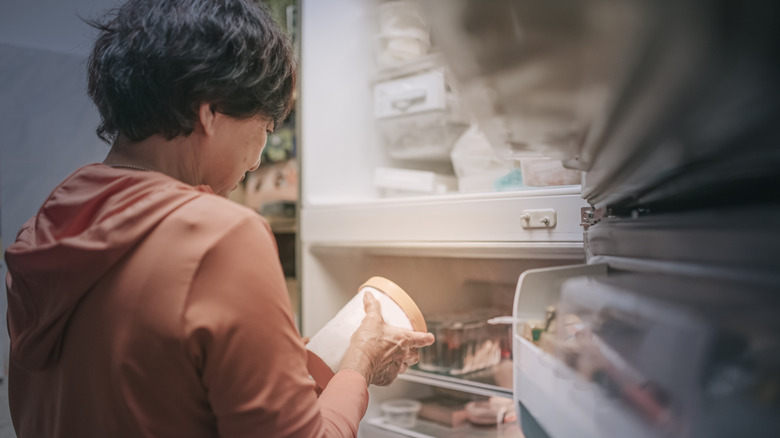Is It Safe To Eat Re-Frozen Ice Cream?
We may receive a commission on purchases made from links.
Whether it liquified while you were cozied up in bed or it dissolved on a hot car ride home, melted ice cream is a common dessert blunder. To fix a soupy pint of ice cream, you can shove it back into the freezer to assume its semi-solid form, but eating re-frozen ice cream may lead to some unintended consequences.
When ice cream melts and reaches temperatures above 40 degrees Fahrenheit, it enters the "danger zone," where harmful bacteria that cause foodborne illness can begin growing. This shift in temperature can happen faster than you think, especially in hot weather or when ice cream is sitting in the sun. Even if you re-freeze your melted ice cream, the cold won't kill bacteria that have already formed, rendering it dangerous to consume even if new pathogens aren't capable of growing and spreading.
From a practical standpoint, refrozen ice cream flaunts some not-so-appetizing characteristics. When ice cream melts, its fine ice crystals and air pockets break down. Refreezing forms larger crystals and traps less air, making it icy, dense, and gritty. Therefore, not only is re-frozen ice cream a potential food safety risk, but it also loses its freshly churned charm.
Tips for keeping ice cream frozen
To keep your ice cream from melting before you even get the chance to enjoy it, a few smart tricks can make all the difference. First, resist the temptation to dig straight into the pint. Instead, scoop out just enough for one serving at a time to prevent the entire tub from warming up.
If you're heading out for a picnic or a beach day, pack your ice cream at the bottom of an ice-packed cooler where it won't sweat or find itself exposed to sunlight each time the cooler lid is cracked open. For even better results, consider using dry ice, which is colder than regular ice and keeps your frozen treats at a safe temperature for hours.
When bringing ice cream home from the store, a little insulation goes a long way. Wrapping your pint in bubble wrap will help maintain its frozen state during the drive, and if you really want to step up your game, a high-quality thermos is a cut above. Thermoses are great for keeping other foods at the right temperature, too, making them a versatile solution for all your temperature-sensitive snacks.
If you can manage to keep your ice cream frozen during travel, while in the sunshine, and even at home on the couch, you won't have to worry about eating re-frozen, bacteria-ridden spoonfuls. Safe eating is happy eating, and basic preventative measures can circumvent unnecessary risks.

